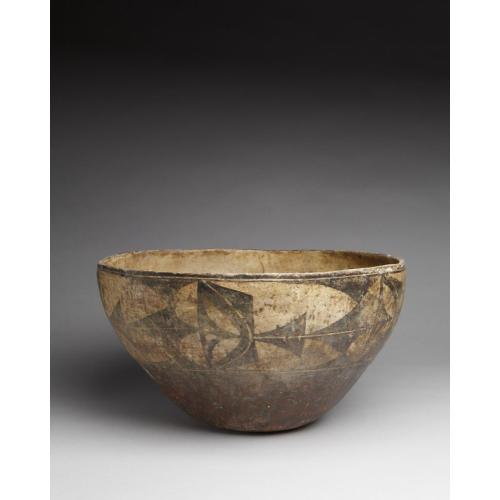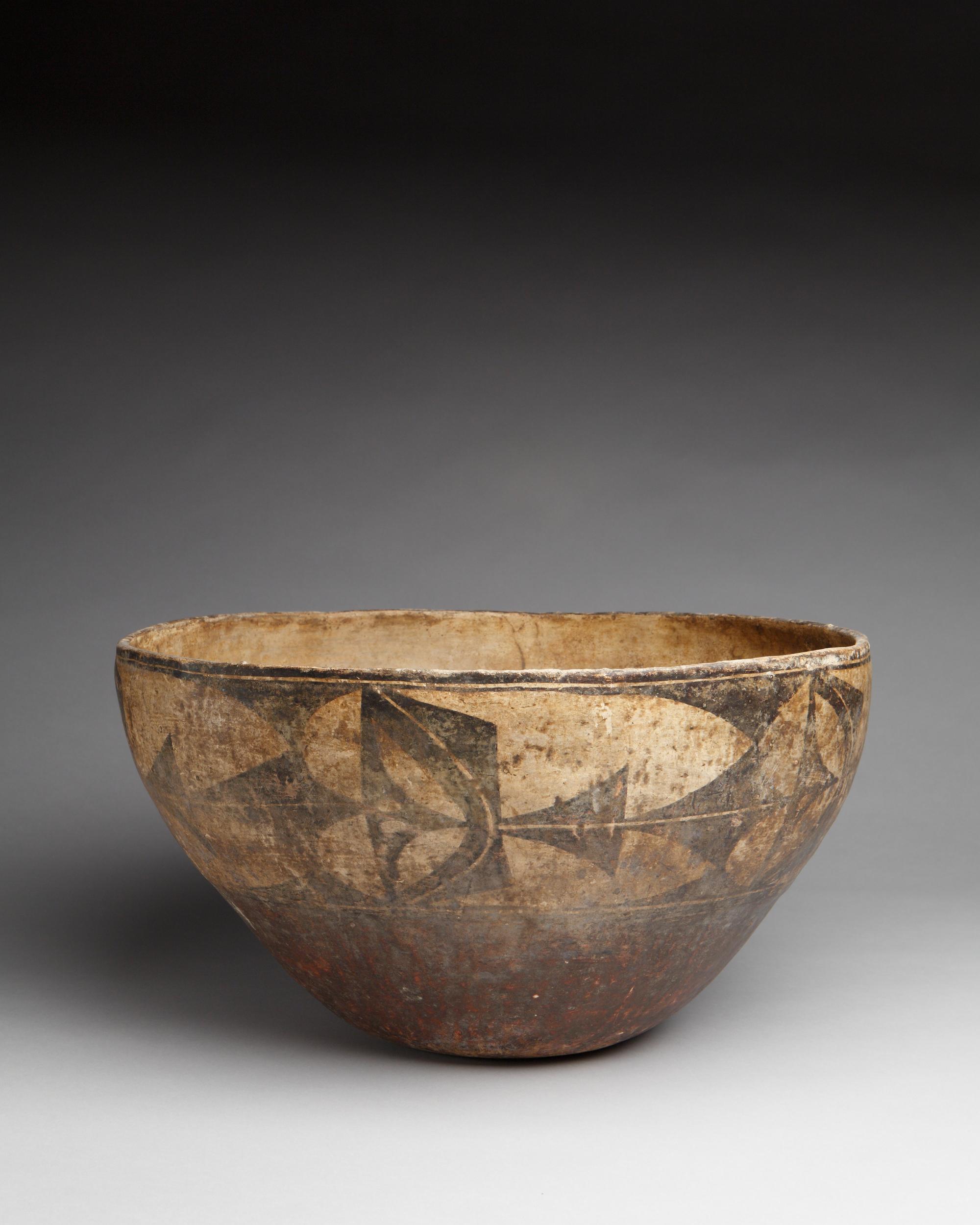
Photograph by Addison Doty. Copyright 2015 School for Advanced Research.
Bowl, dough
Date: 1850-1870
Artist or Maker: Unknown
Dimensions:
22.9 x 43.1 cm (9 x 16 15/16 in.)
Medium: clay | paints
Credit Line: Indian Arts Fund purchase for the permanent collection, 1928.
Place Made:
Valencia, Cibola, Bernalillo, and Sandoval Counties, New Mexico, Southwest, United States, North America
Object Number: IAF.1027
Not on view
Tribal Collection Review RemarksAccording to the participants in the Acoma collection review visit May 11-13, 2016 (Events Record “Collection Review: Acoma Pueblo Review 6”): This bowl was likely used for food preparation. There is no line break on this bowl. There is an area at the rim that appears to be one but is just an area where the paint may have flaked off. Not much more was said about this bowl.
There was some discussion that a kiln fired dough bowl would likely last longer with less damage over prolonged use. This would be because the kiln, being a more controlled environment, can achieve a more even fire resulting in a more resilient piece.
According to the participants in the Acoma collection review visit February 26-27, 2019 (Events Record “Collection Review: Acoma Pueblo Review 12”): Dough bowls are made thicker than a regular bowl or a water jar. The thicker construction helps to support kneading and extend the life and use of the bowl. Fine sand was often used as the temper for the clay as it helps to make a sturdier vessel. During the firing, it wasn’t uncommon for the rim of a dough bowl to warp because of its weight and size.
The interior of the bowl is sometimes slipped however the more a dough bowl is used the more the interior will wear away. Like food bowls, the interior of dough bowls can become shiny and smooth from use.
With the introduction of modern cooking ware, the use of dough bowls declined. Today at Acoma, dough bowls are rarely made and used.
In Collection(s)
Bibliography:
The Indian Arts Research Center, in collaboration with Native American community scholars, strives to present accurate collections records. Records may be updated as new information becomes available and is reviewed with the Native American community having cultural affinity to particular items. Please write to iarc@sarsf.org if you have questions or concerns related to the documentation.
